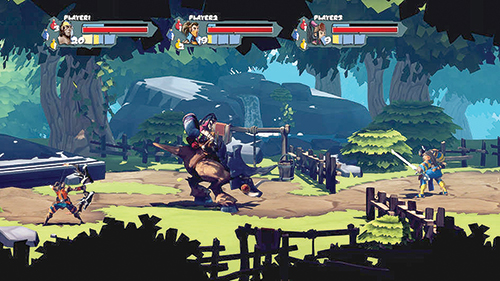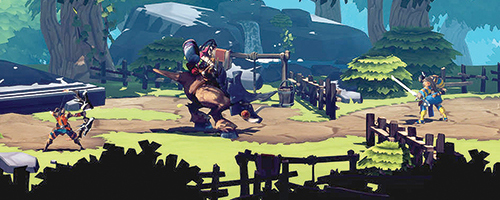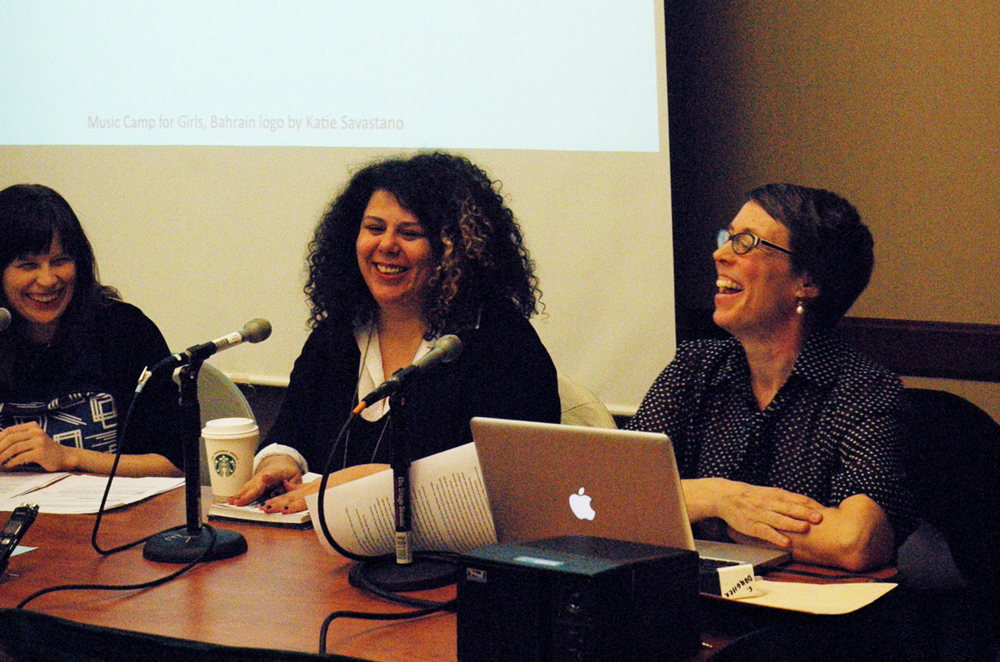When I first fired up Sacred Citadel I wasn’t expecting very much. Brawlers (think Streets of Rage or Final Fight) have been in a nostalgia-chasing funk lately, and at most I expected button-mashing and streams of enemies that explode into torrents of regenerative raw vegetables and whole, cooked fowl.
Blast from the past

When I first fired up Sacred Citadel I wasn’t expecting very much. Brawlers (think Streets of Rage or Final Fight) have been in a nostalgia-chasing funk lately, and at most I expected button-mashing and streams of enemies that explode into torrents of regenerative raw vegetables and whole, cooked fowl.
But Sacred Citadel, despite its flaws, surprised me in several ways while still holding true to its roots.
Sacred Citadel is a co-op, side-scrolling brawler akin to games like Golden Axe or, in more recent memory, Castle Crashers. Recent attempts to reinvigorate the brawler have largely stuck close to genre conventions in terms of gameplay, relying on style and aesthetic designed to catch the eye and pique interest.
Unfortunately, this means that what we often get from the modern brawler is a very pretty game where you’re mostly just walking from left to right mashing the attack buttons (though there have been advancements, to be sure, like class selection and the inclusion of RPG mechanics).
Sacred Citadel certainly doesn’t reinvent the wheel in this regard, but it eschews certain archaic genre conventions admirably while building upon recent advancements.
You start the game by selecting one of four classes: warrior, shaman, ranger or mage. The distinctions in terms of combat abilities should be apparent, and from my experience each seemed completely viable on its own.
The major difference in class comes in the form of “powers,” massive attacks that can be charged through combat over the course of the game. There is a maximum of three power tiers, with new tiers unlocking as your character levels up—all staples of the brawler genre.
But Citadel seems more interested in shaking up the norm, like with the felled enemy mechanic. In most brawlers an enemy down is a waste of time: There’s no way to harm them while they’re on the ground, so you just have to wait for them to get back up.
Not so in Citadel. In fact, you’re encouraged to get your enemies on the ground using various combos, because once down your usually staggered basic attack becomes a flurry of slashes that lets you deal extra damage until the monster gets back up.
This might seem like a minor improvement, but it’s also an obvious one that I’m surprised has taken this long to be implemented. It’s also incredibly satisfying, and little touches like this are peppered throughout the game.
Citadel also introduces a loot system to the brawler genre—similar to those in Diablo or Torchlight—that has been highly streamlined. Gear dropped by enemies or bought at one of the town hubs accessible in each act can be assessed immediately via a simple pop-up menu and swapped out at the press of a button.
The entire process takes seconds; there is no rummaging or inventory management. For those looking to get deeper into inventory management, there is a slotted crystal system that lets you reap statistical benefits of varying magnitude for 10 minutes at a time.
The game rarely becomes difficult enough to warrant dropping the gold on these items. In fact, you could easily go the entire game without using a single crystal, but the option is there.
Gameplay tweaks aren’t the only place where the game shines—it’s also gorgeous. A cursory glance at developer Southend’s track record and this should come as no surprise.
Southend is responsible for the gross charm surplus of the recent Ilomilo, and while the two games couldn’t look more different it is clear that an equal amount of time went into the design of both the character models and environments in Sacred Citadel.
The beauty of the game almost makes up for the occasionally janky animations that cause characters to swivel on their heels or force a defeated boss to zip across the screen so that he can go through his death animation
over there.
What Sacred Citadel gains in aesthetic and nuanced gameplay, it loses in its story—this is, of course, assuming that there is a coherent story to be found. There are certainly some very attractive cut scenes during which things are said and stakes are presumably raised in an incremental fashion, but I couldn’t really tell you much more than that.
There is an ageless evil that needs to collect ancient artifacts, a race of angelic monks who are (you guessed it) the protectors of the land and enemies that aren’t called orcs and goblins but are totally orcs and goblins.
All of your archetypal fantasy tropes are present, to no great effect. It might sound like I’m making a big deal about the lack of story in a genre where story has historically been absent (the storyline of the original Double Dragon revolved around someone getting punched in the gut), but seeing the ways in which Southend shook up the brawler formula in other areas makes me wish that they had paid half as much attention to the tale they were trying to weave.
Sacred Citadel
Available now via download on Steam, PSN and Xbox Live
✭ ✭ ✭ ✩ ✩
The lack of story does bleed into one of my biggest complaints about Citadel, though, which is that the game does not explain itself very well. A perfect example: My shaman’s second-tier power, when deployed, makes me and my entire team glow. What else does it do? I have no idea. Presumably it increases damage or some stat, but the game was never explicit about it and I wasn’t able to find the information in the menus.
For all I know, it’s actually just a very good light show. The end result is that I only used the ability by accident and forewent my entire second-tier power in favor of my first and third.
The same goes for the challenges, where you attempt to complete a level without dying in a certain amount of time or after racking up a particular score. The system lacks explication.
Sacred Citadel strikes me as a great dorm game to blast through in a night, or as a curiosity piece if you just want to see what is being done with the brawler genre today. The controls are accessible, the art design is great and the story can be glazed over.
That being said, while the combos and powers do a great deal to keep the game fresh, by the last act I felt as though I had had my fill of what the game had to offer. If you go to purchase the game, you might notice an extra act available as downloadable content.
Personally, I can’t come up with a compelling reason to go that far down the rabbit hole, but I’ll let you be the judge of that.






